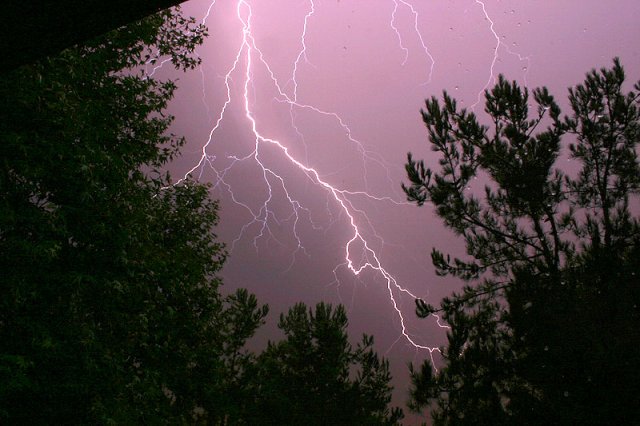 |
| Photo courtesy of weathercurrents.com |
Thunderstorms! Something we’re pretty used to here in WNY. Every year people are killed or seriously injured by these storms, so it’s not something to be taken lightly.
When the meteorologist is talking about all of those cold fronts and warm fronts and the watches and the warnings, we often get lost in the words.
So the first step is to know the difference:
· A thunderstorm is defined as severe if it produces hail at least 1 inch in diameter or has wind gusts of at least 58 miles per hour. Every thunderstorm produces lightning, which kills more people each year than tornadoes or hurricanes. Heavy rain from thunderstorms can cause flash flooding and high winds can damage homes and blow down trees and utility poles, causing widespread power outages.
· A severe thunderstorm watch means that severe thunderstorms are possible in and near the watch area and that you should stay informed and be ready to act if a severe thunderstorm warning is issued.
· A severe thunderstorm warning is issued when severe weather has been reported by spotters or indicated by radar. A warning indicates imminent danger to life and property.
Now that we know that, what should we do during a severe thunderstorm?
· Listen to local news or NOAA Weather Radio for emergency updates.
· Watch for signs of a storm, like darkening skies, lightning flashes or increasing wind.
· Postpone outdoor activities if thunderstorms are likely to occur. Many people struck by lightning are not in the area where rain is occurring.
· If a severe thunderstorm warning is issued, take shelter in a substantial building or in a vehicle with the windows closed.
· Get out of mobile homes that can blow over in high winds.
· If you can hear thunder, you are close enough to be in danger from lightning. If thunder roars, go indoors!
· The National Weather Service recommends staying inside for at least 30 minutes after the last thunder clap.
· Avoid electrical equipment and telephones, use battery-powered TVs and radios instead.
· Shutter windows and close outside doors securely.
· Keep away from windows.
· Do not take a bath, shower or use plumbing.
· If you are driving, try to safely exit the roadway and park. Stay in the vehicle and turn on the emergency flashers until the heavy rain ends.
· Avoid touching metal or other surfaces that conduct electricity in and outside the vehicle.
· If you are outside and cannot reach a safe building, avoid high ground; water; tall, isolated trees; and metal objects such as fences or bleachers. Picnic shelters, dugouts and sheds are NOT safe.
For information on how to prepare for thunderstorms, click here!
No comments:
Post a Comment